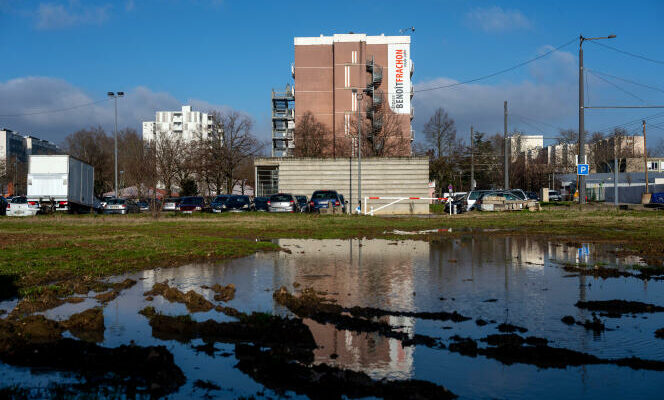“We visited the house of an elderly widowed lady. At home, it was no more than 5°C and she was wearing a down jacket. » Carrying out energy diagnostics in the most disadvantaged suburbs leads to this type of meeting. At the head of the local energy agency Paris Terres d’envol, which supports individuals in renovating their homes in eight towns in Seine-Saint-Denis, Mourad Boukrara discovered this other side of energy poverty, that of suburban houses. “Some houses are almost unsanitary, with traces of humidity on the walls, no waterproofing under the windows or even uninsulated attics”, he explains. Out of a total of 500 homes diagnosed as of January 1, 2023, it indicates that 70% are housing labeled F or G, therefore thermal strainers. On this lot, 85 houses have so far been the subject of work, only around thirty of which have been completed.
If the pace of renovations is accelerating in France to reduce the number of these ultra-energy-intensive homes – 17.8% of the stock as of January 1, 2023, or 6.6 million homes –, it still remains too slow in view of the challenges both climatic and social. Faced with the emergency, the government declared in October 2023 that it would allocate 1.2 billion euros to the HLM park in order to carry out the energy renovation of 120,000 social housing units per year, for three years. For its part, the National Housing Agency (ANAH) has planned, in December 2023, to increase its budget by 50%, which will be increased to more than 6 billion euros, primarily intended for private housing and of a set of measures that households can request. For MaPrimeRénov’, for example, the financial effort must increase from 2.4 to 4 billion euros.
At the forefront of renovation, the priority districts of city policy (QPV) are 80% dominated by social housing, most of which is old since it dates from before 1974. “On our programs in these neighborhoods, 30% of social housing has an E, F or G label”reports Anne-Claire Mialot, general director of the National Agency for Urban Renewal (ANRU), which finances and supports the transformation of these neighborhoods. “The situation there is critical. Because these tenants are suffering increased gas and electricity bills due to increasingly constrained wallets”, she insists. For their part, social landlords, subject to the upheaval of their economic model due to a drop in their financial income, have less and less means to absorb the fluctuating costs of energy prices.
You have 60% of this article left to read. The rest is reserved for subscribers.
